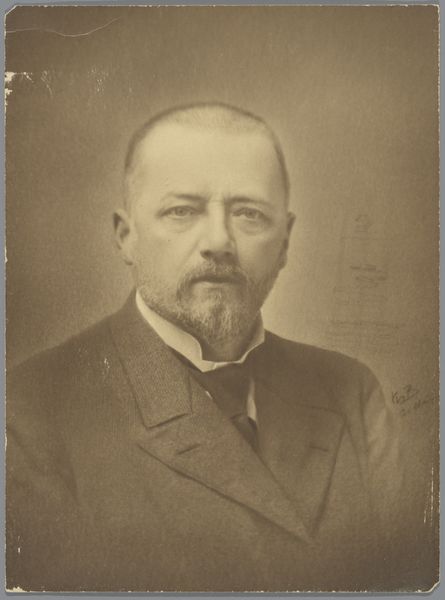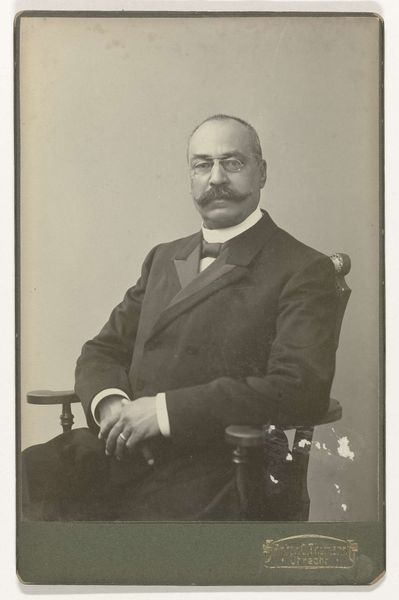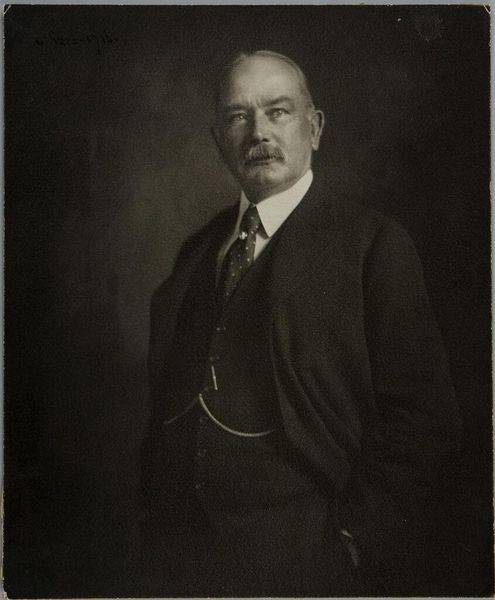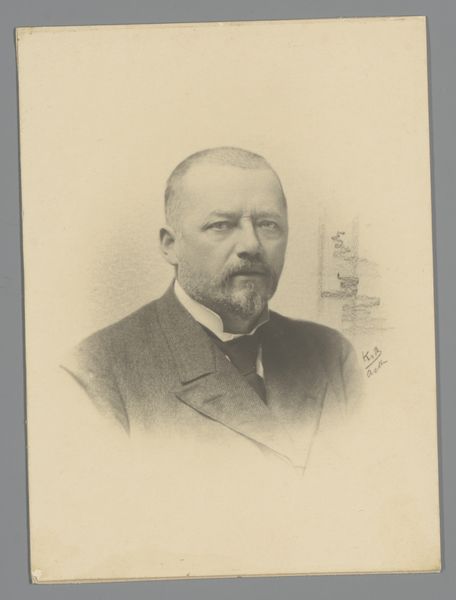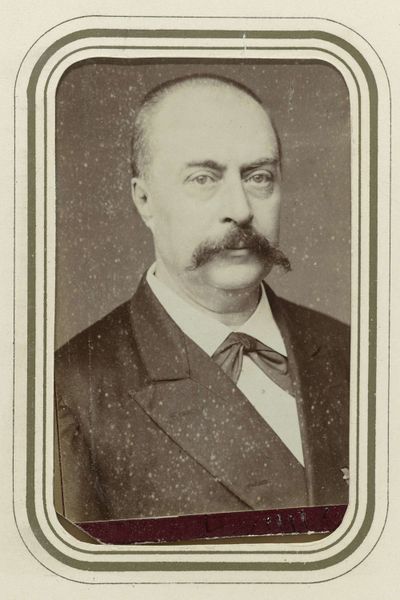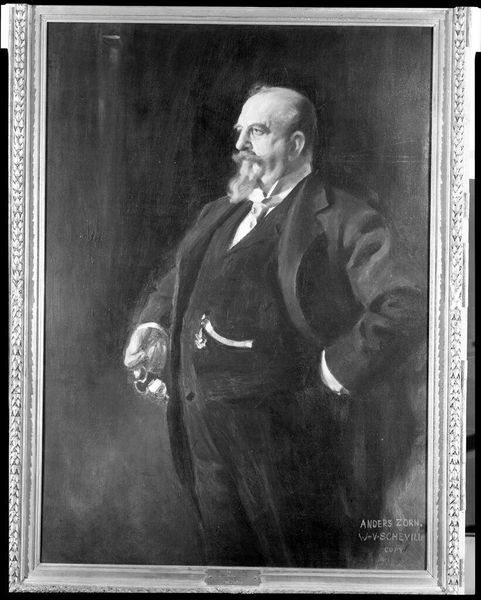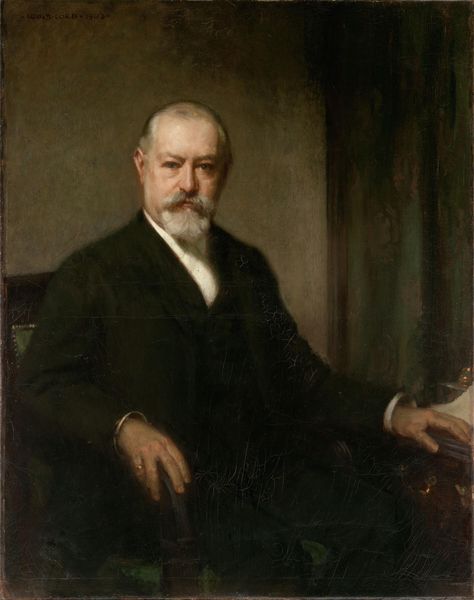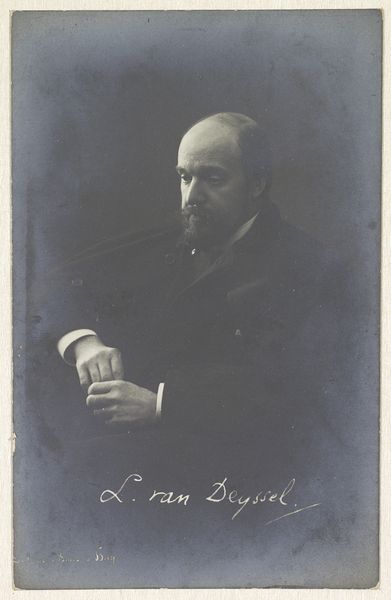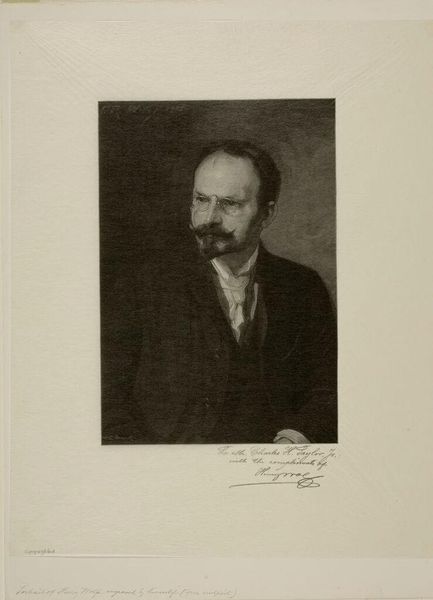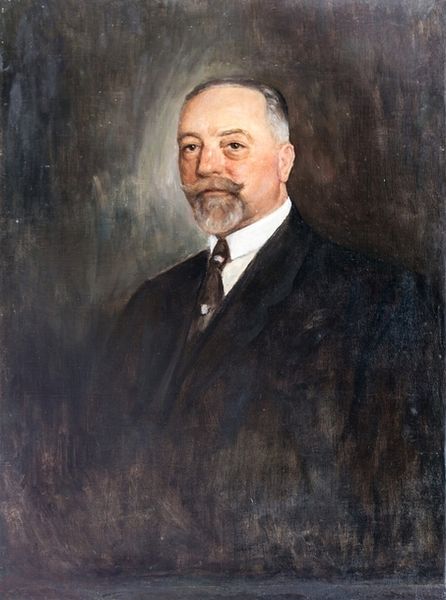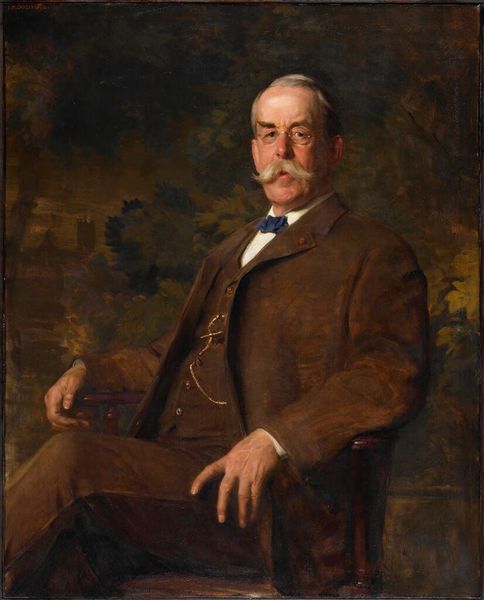
drawing
#
portrait
#
drawing
#
picture layout
#
photo restoration
#
low key portrait
#
portrait image
#
portrait
#
portrait reference
#
black and white
#
single portrait
#
photo layout
#
fine art portrait
#
realism
Copyright: Public domain
Curator: Immediately, I'm struck by the gravity in this portrait. There’s such a stillness, a formality. Editor: Indeed. What we have here is Ivan Mrkvička's drawing of "Portrait of Přemysl Šámal". The image offers a direct look into the sitter's persona, reflecting the aesthetic sensibilities and societal norms of its time. Curator: Yes, his piercing gaze and posture seem intended to project power and authority. The low-key lighting accentuates his features and gives the image a dramatic intensity, it reminds me of the work of Nadar. It evokes a sense of him being entrenched in the bureaucracy of early 20th century Europe. Editor: Absolutely. Portraits during this period functioned as powerful tools for shaping public image and conveying specific messages. Given that Šámal was a prominent political figure, understanding his role in shaping national policies and understanding his representation can shed light on the power structures within those societies. This artistic interpretation served to reinforce his authority and legacy. The very conscious hand placement speaks volumes. Curator: Precisely! We can also view it through a critical lens, analyzing the dynamics of representation, considering the male gaze and how traditional portraiture often served to reinforce patriarchal structures. The ring on his finger—a signifier of status, marital and possibly familial power. Editor: It raises essential questions about the politics of visibility and how such images influence historical narratives, further analyzed by scrutinizing the stylistic choices such as its basis as a black and white drawing which evoke a traditional and enduring timelessness. Curator: By contextualizing this portrait within discussions of identity, power, and historical representation, we can achieve a more holistic appreciation for both the art and the man it depicts. Editor: It allows us to understand not just the aesthetic value of the drawing but also its socio-political significance in broader historical context. Curator: So next time we view such portraits we should consider not just the technical skill but also the ideological frameworks and power relations embedded within them.
Comments
No comments
Be the first to comment and join the conversation on the ultimate creative platform.
